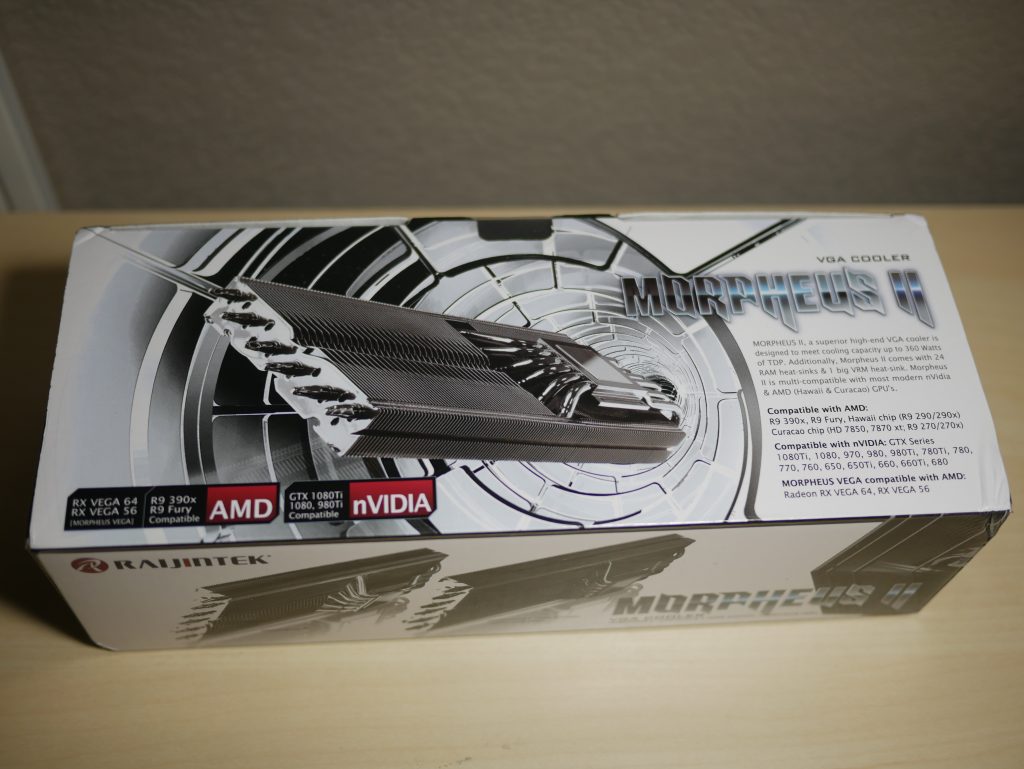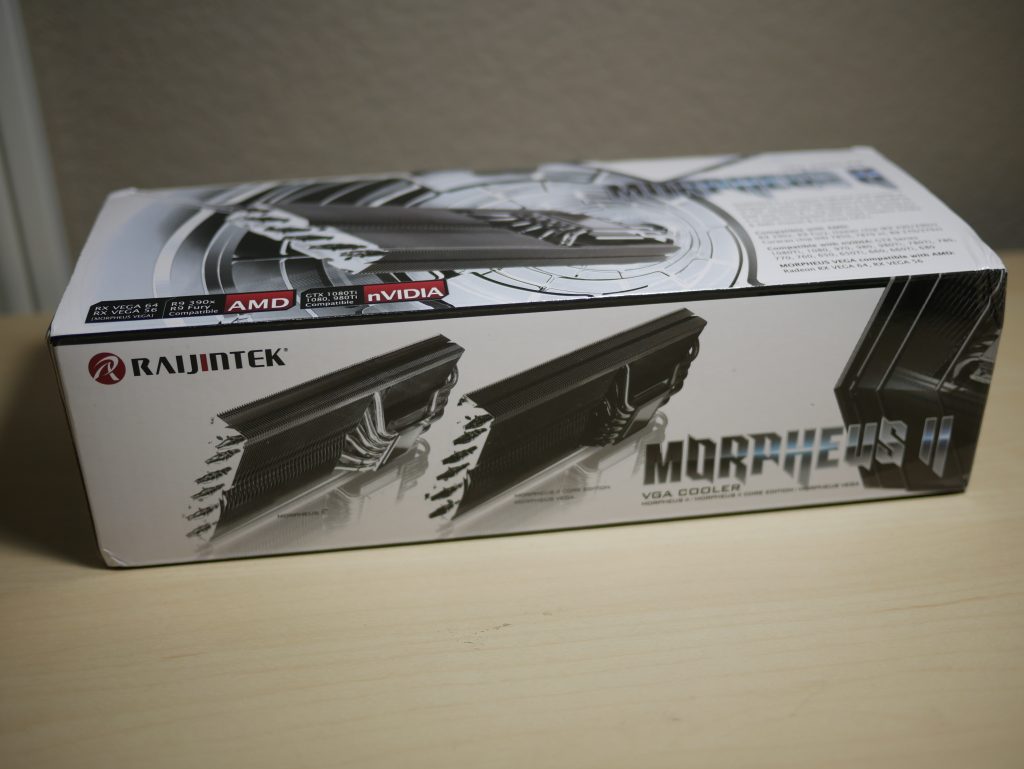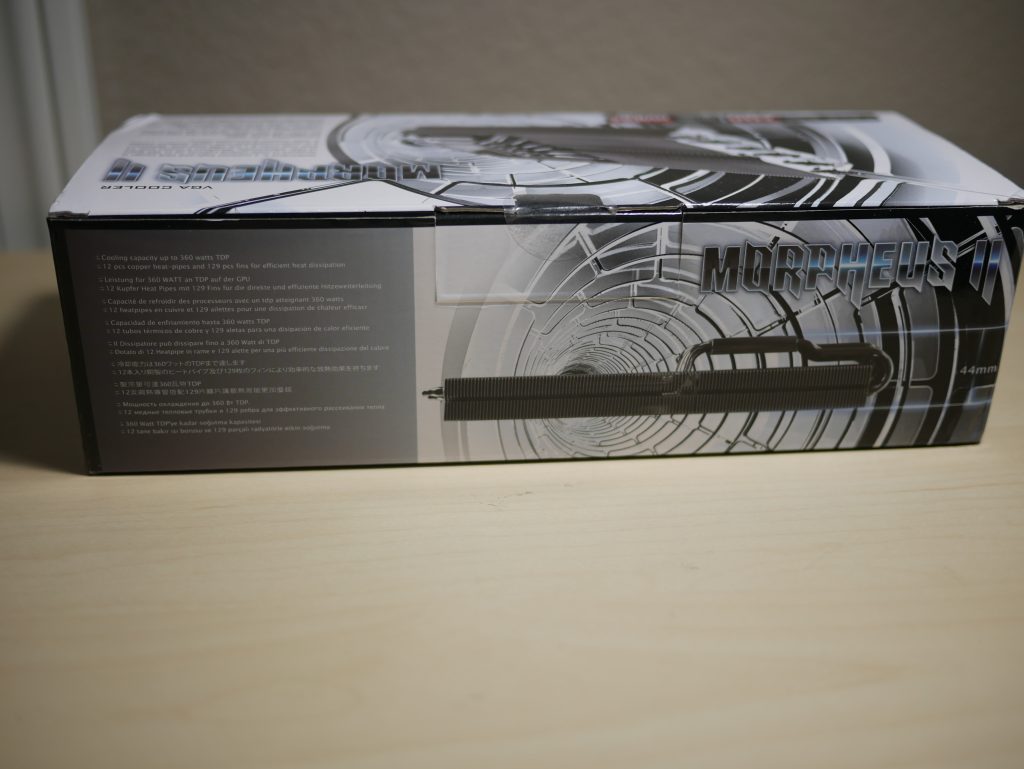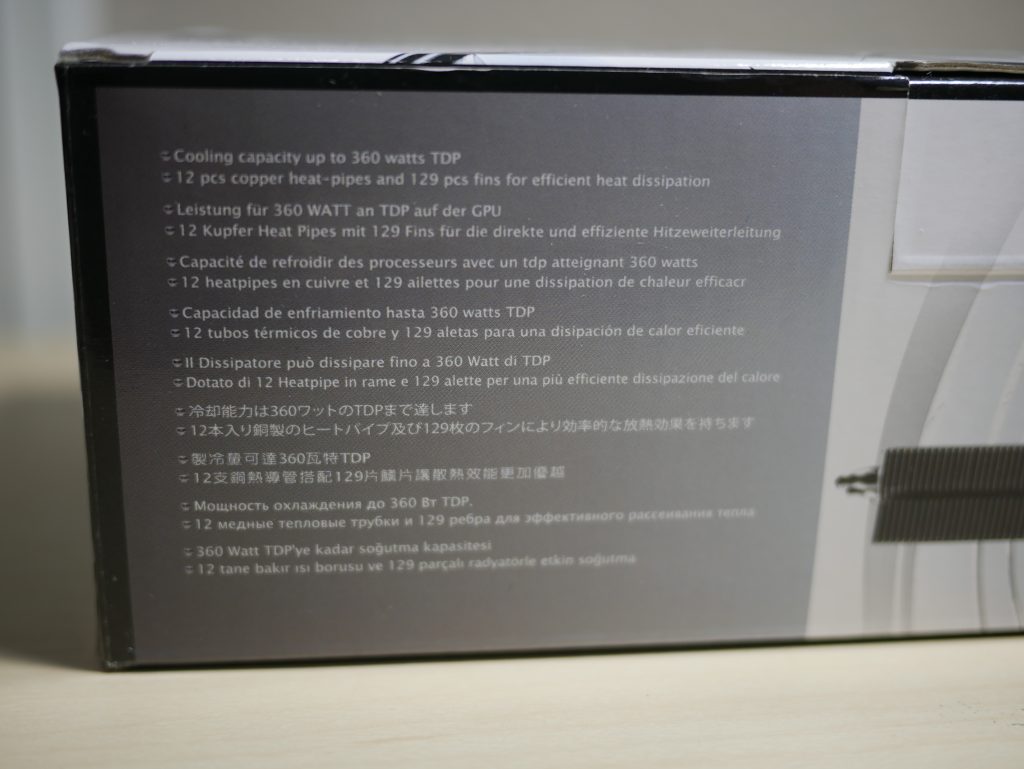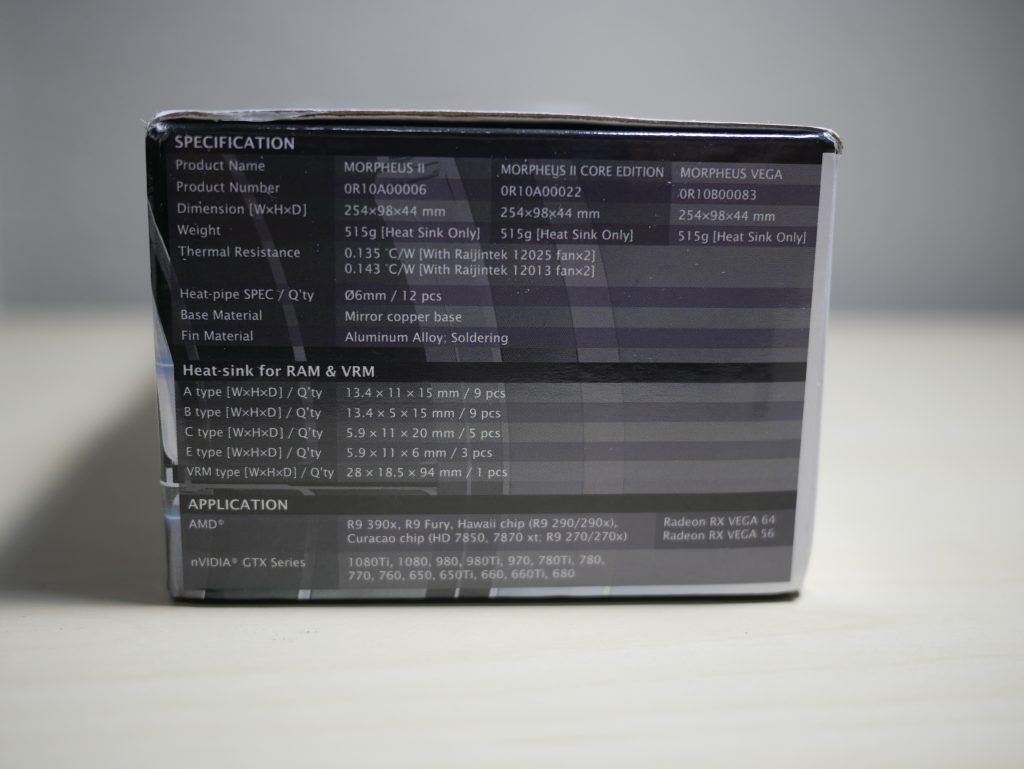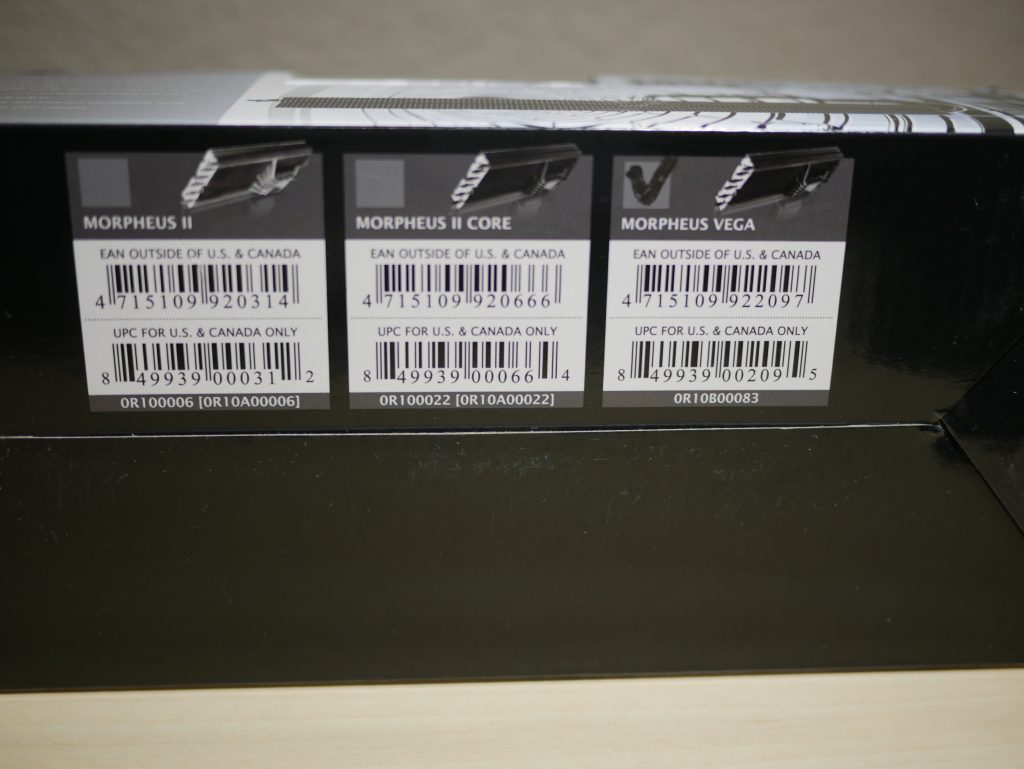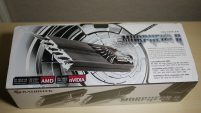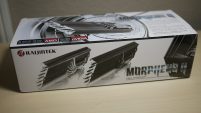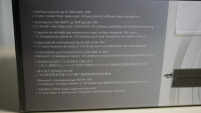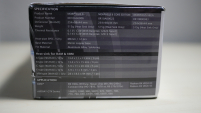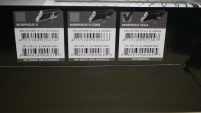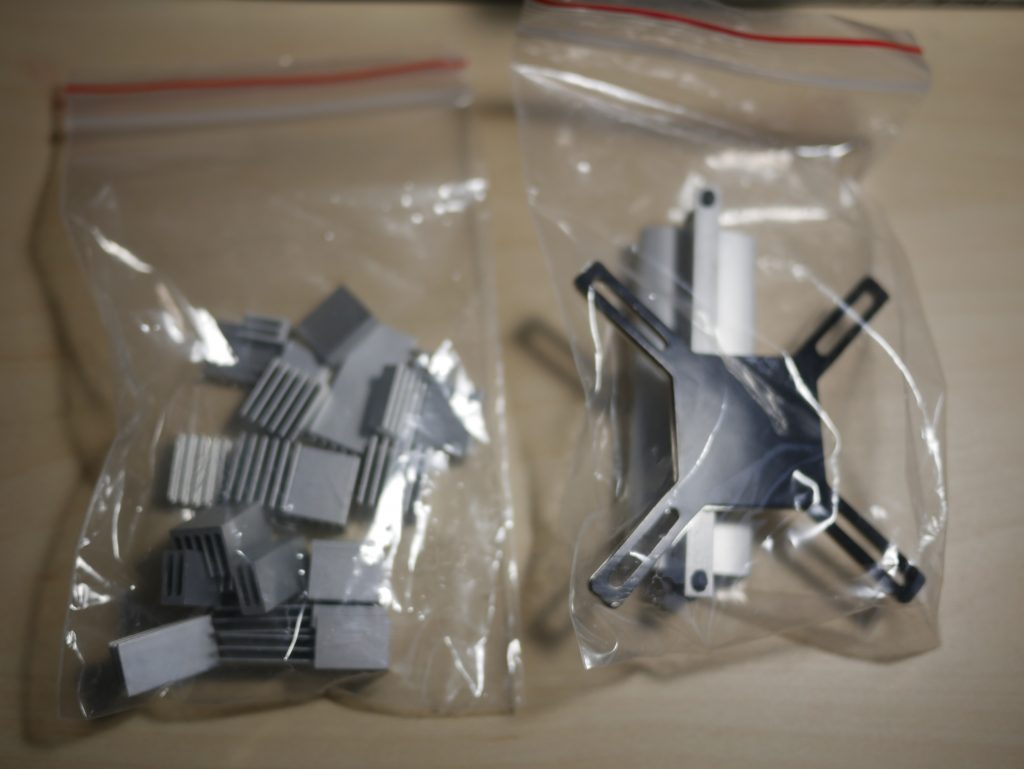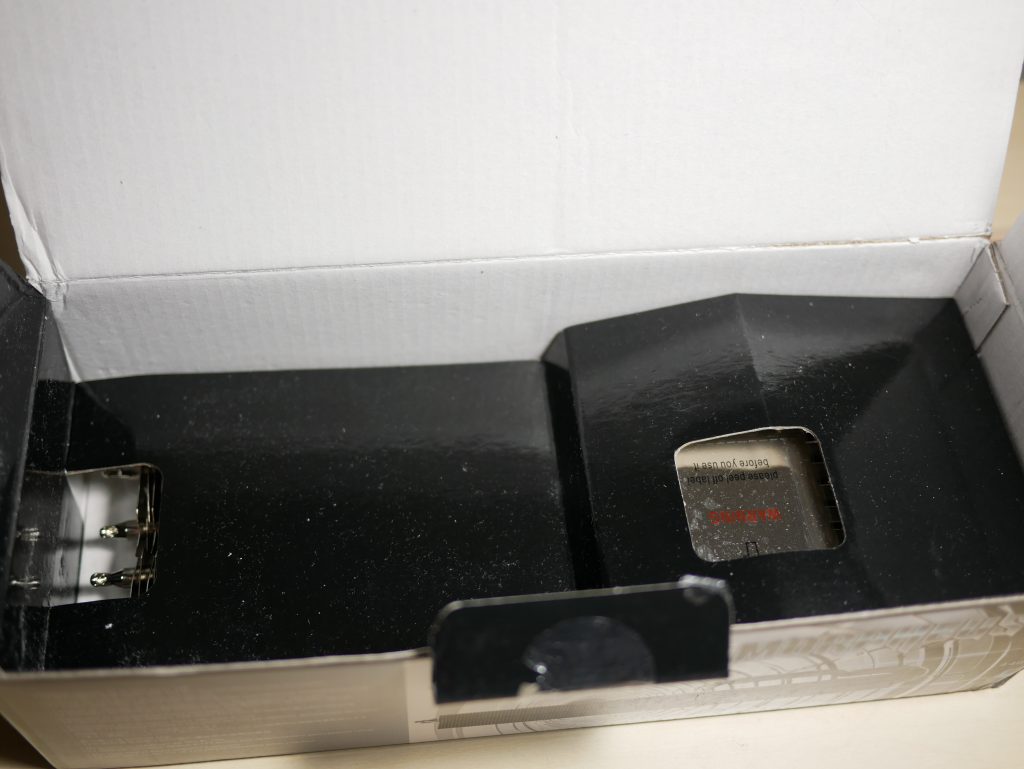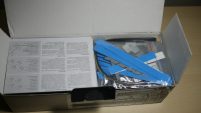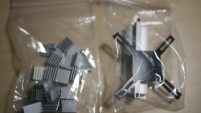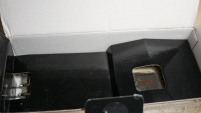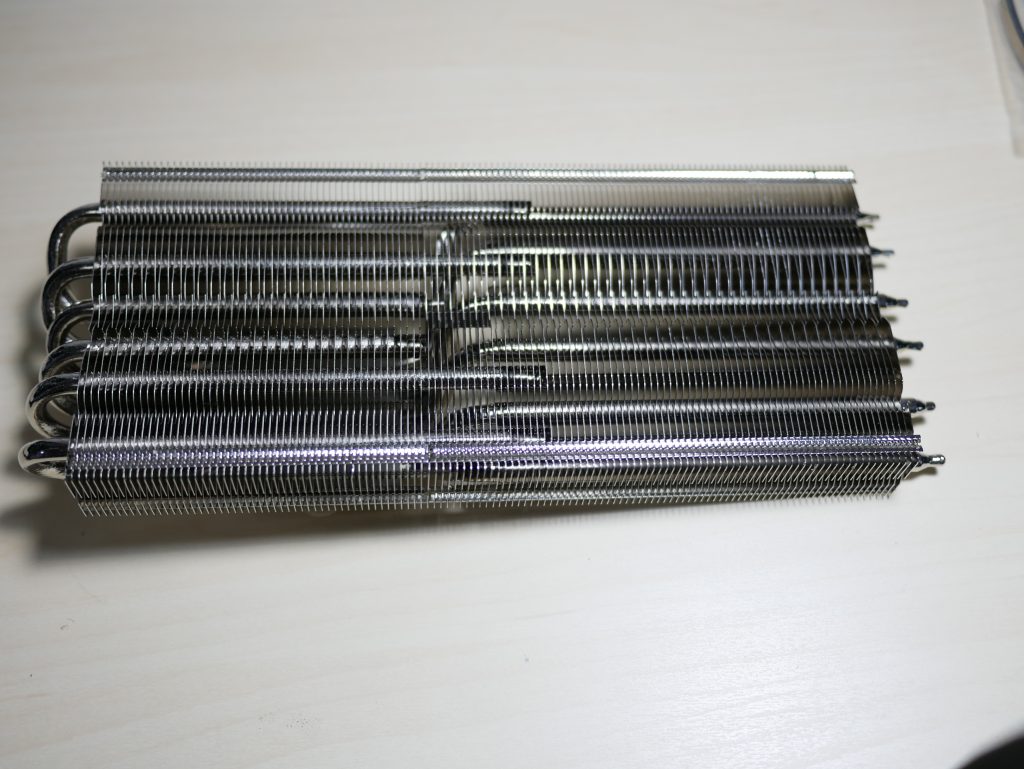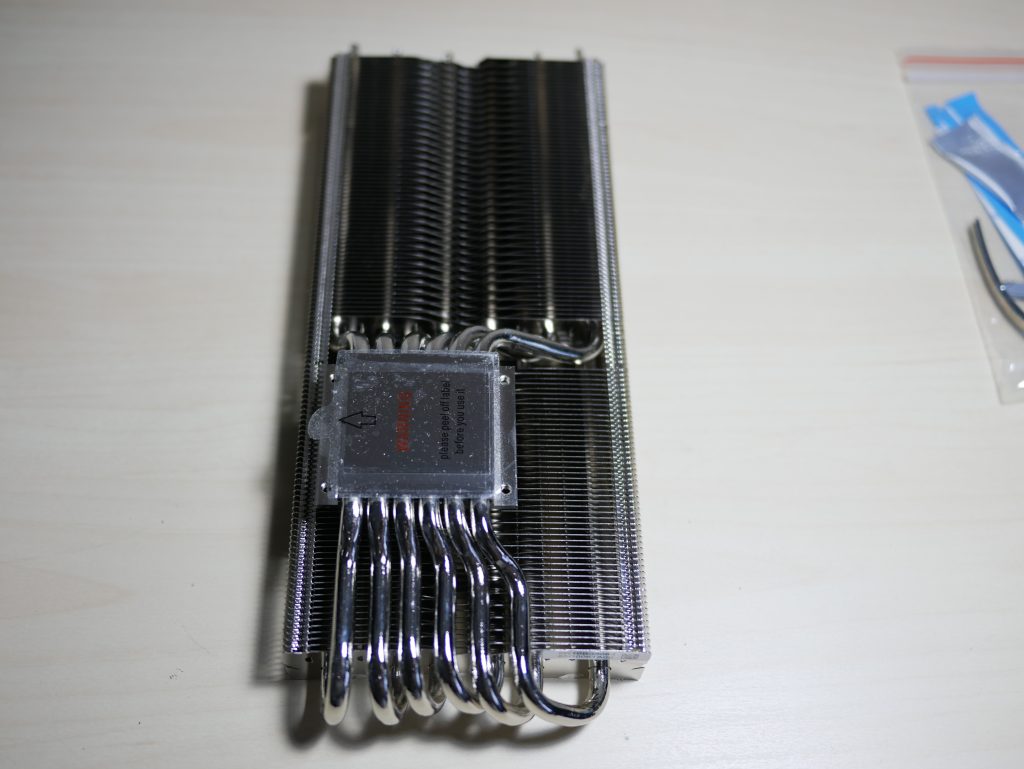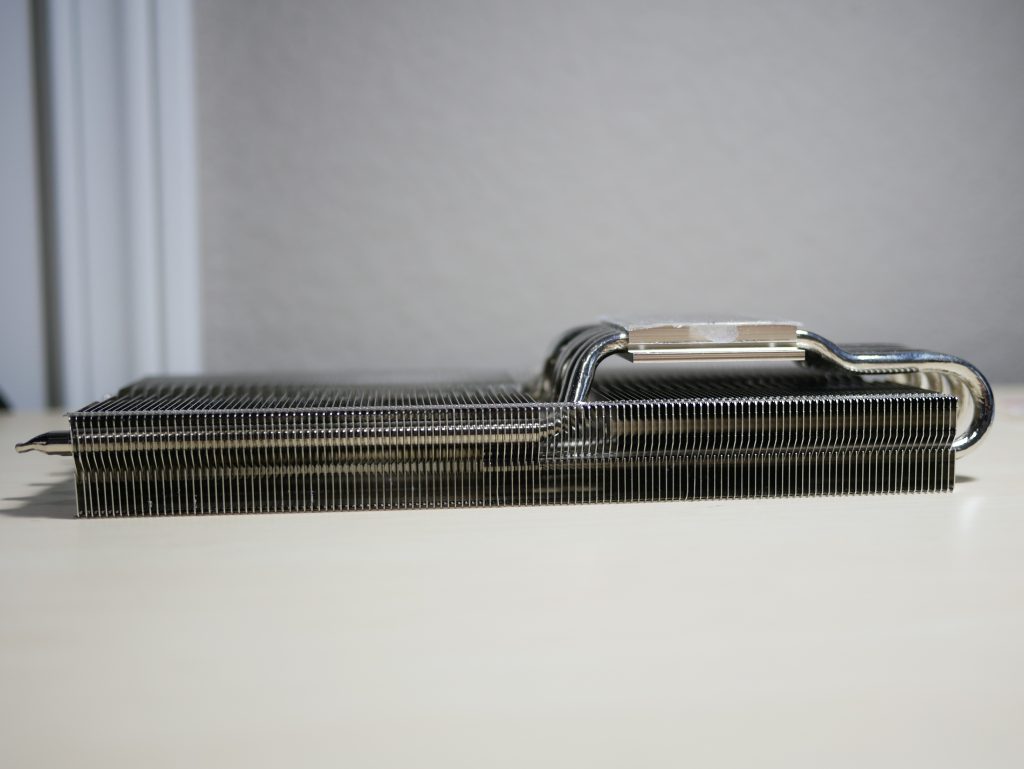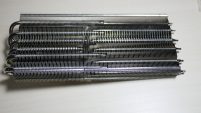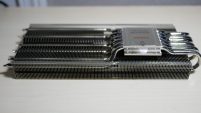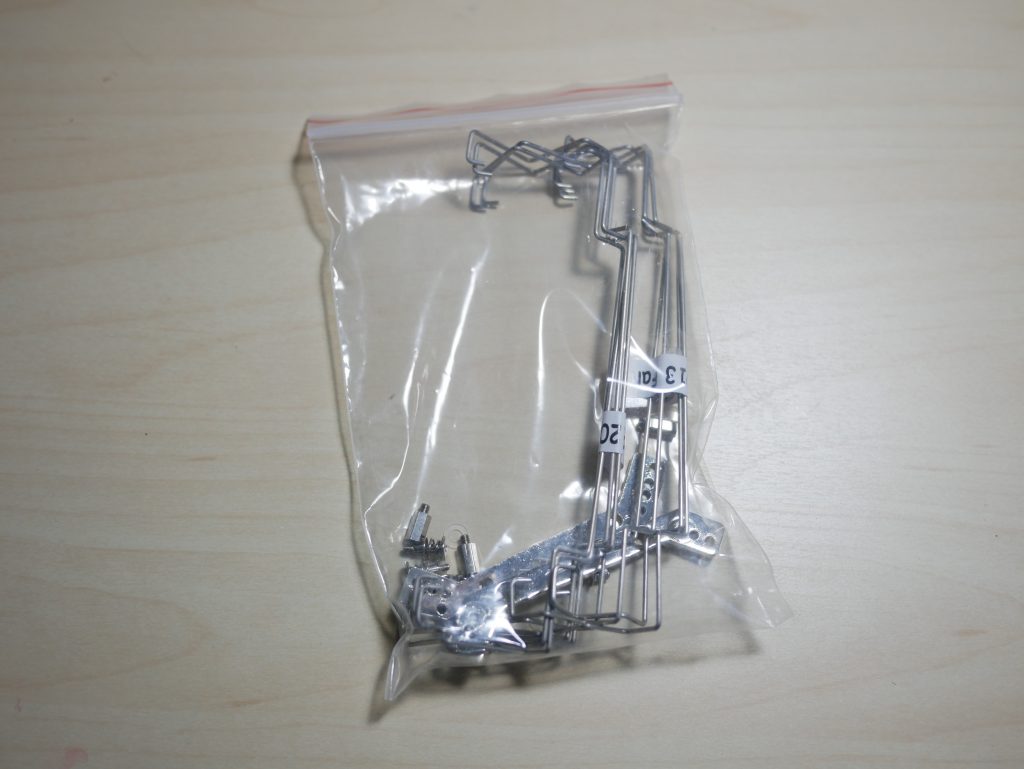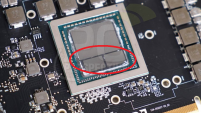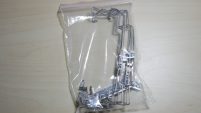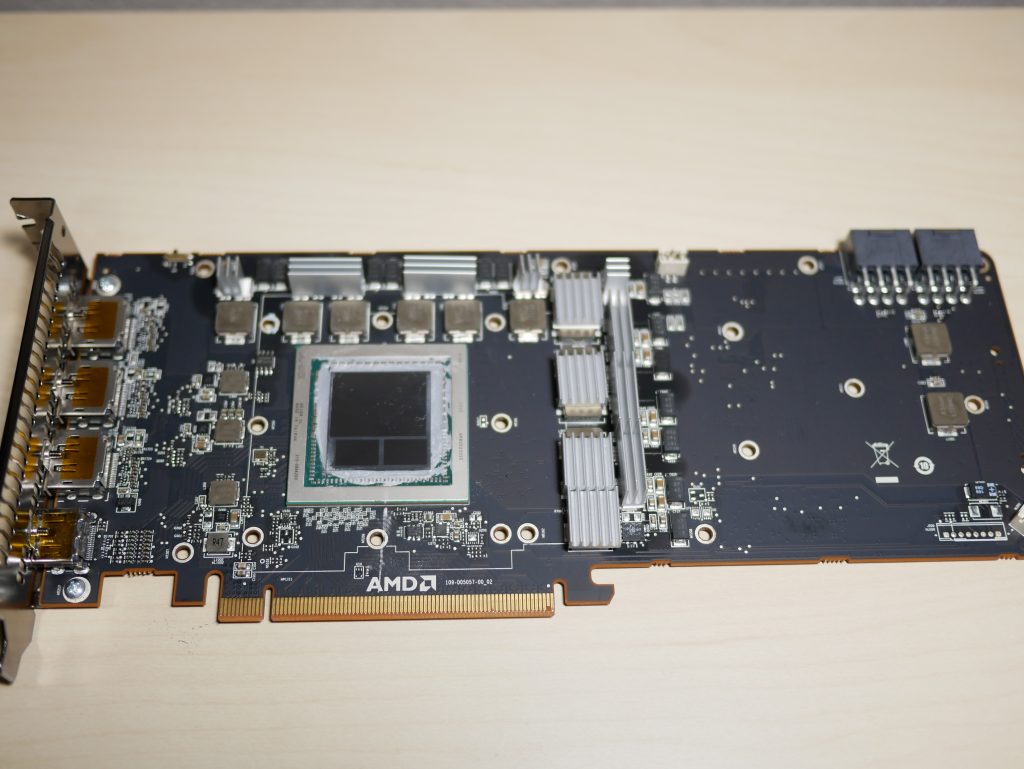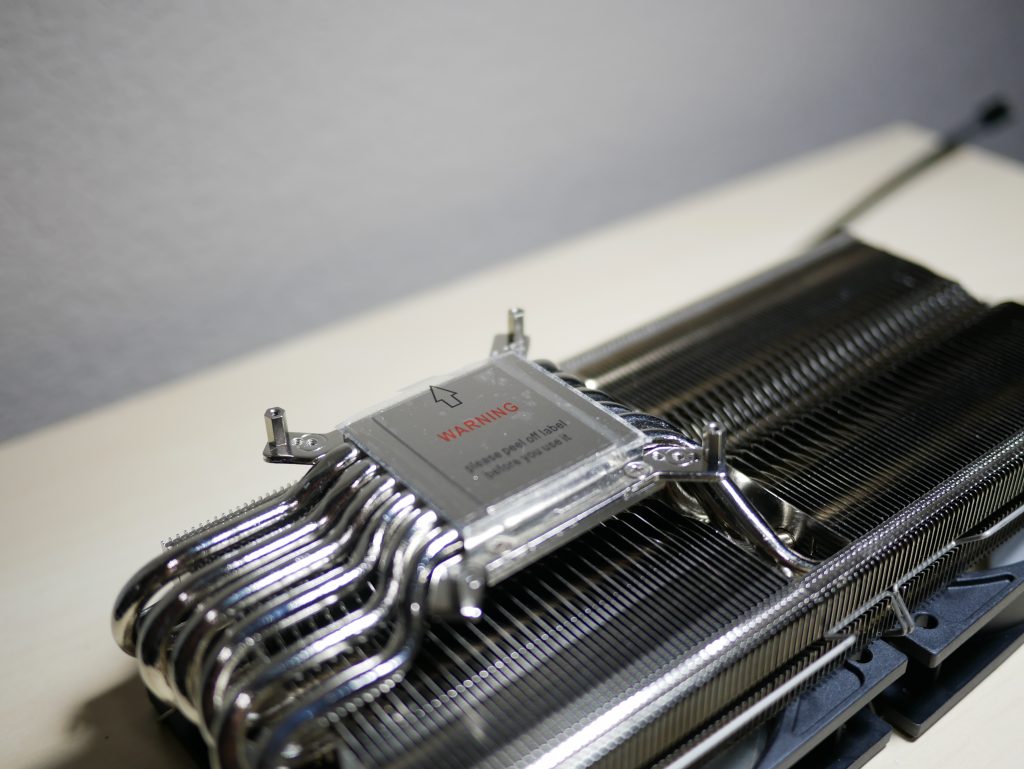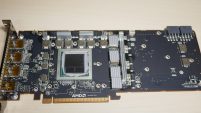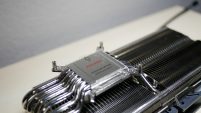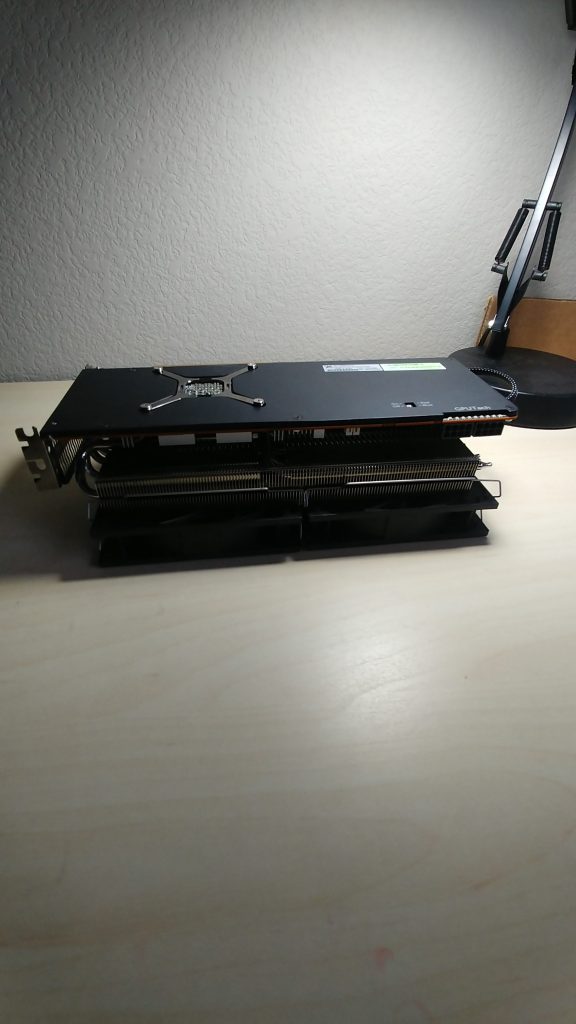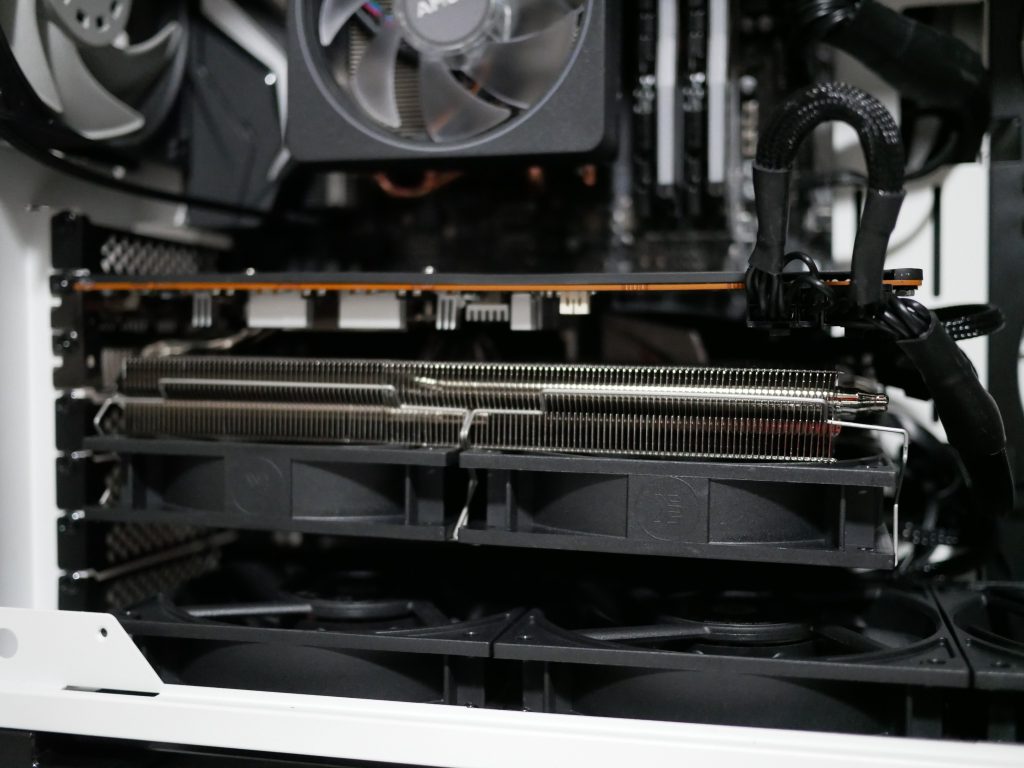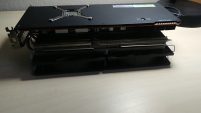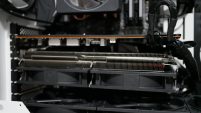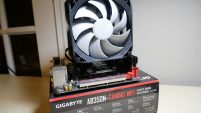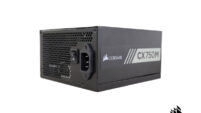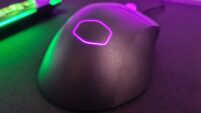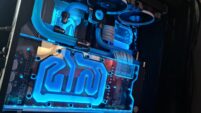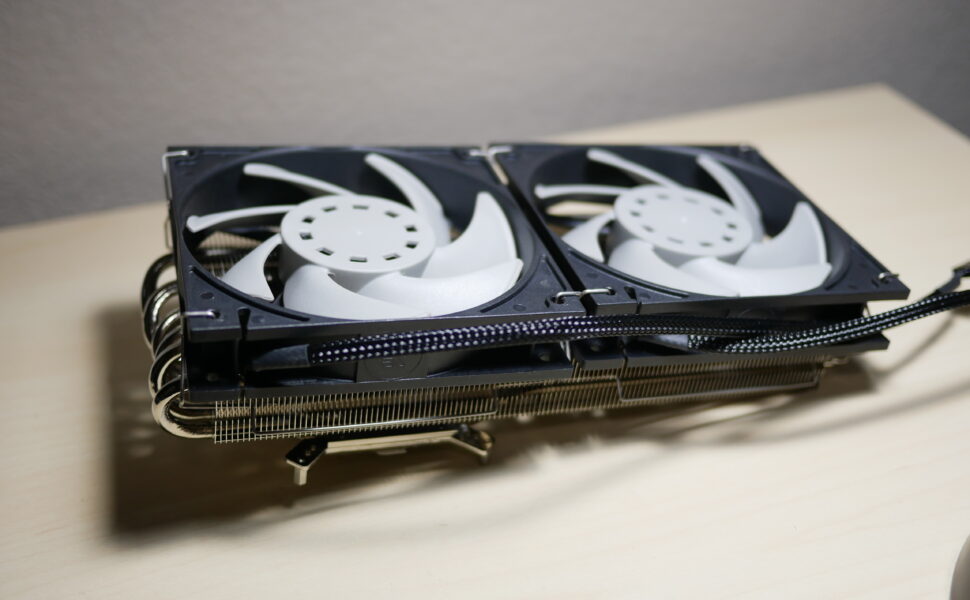

Raijintek Morpheus II Vega GPU Cooler
Overall, If you are interested in looking for a replacement GPU cooler for any stock GPU cooler take a look at the Raijintek Morpheus. If you are looking for one for your Vega 64 & 56, pick up the Raijintek Morpheus II Vega Edition and keep the card cool and the clock speeds high.
- Great cooling potential
- Mounting options for most Nvidia and AMD GPUs
- Ability to install fans of your choice, which can also be an advantage if a fan fails
- Cooler overall temps allowed the Vega 64 to maintain high 1500s-low 1600mhz clock speeds
Raijintek is well-known for its coolers and also its innovative pc case designs. They strive to try and bring effective cooling solutions to the market without the huge cost associated with other bigger brands that have dominated the market for so long.
After taking look at the companies Themis CPU Cooler and being really impressed, we are going to take a look at the AMD Vega variant; Raijintek Morpheus II Vega Edition.
Raijintek Morpheus II Vega Key Features
| Cooling Capacity | Up to 360 watts TDP, also 2x 120mm fans |
|---|---|
| Heatsink design | 12 x 6mm heatpipes and 129 fins for efficient heat dissipation |
| Aluminum heatsinks | 24 pcs of aluminum heat sinks for memory and 1 large heat sink for VRM |
| Compatibility | The Morpheus is compatible with many modern and future GPUs with the flexible mounting solution |
| Nickel plated Heatsink | Adding a nice shine to your GPU |
Raijintek Morpheus II Vega Specifications
| Dimensions (W x H x D) | 254mm x 44mm x 98mm |
|---|---|
| Weight | 515 grams |
| TDP | 360W |
| Heat-pipes | 12 x 6mm |
| Fans | Supports 2 x 120mm x 25mm Fans |
| Materials | 129 Aluminum fins with nickel plating, Copper base |
| Compatibility | Nvidia: 600-series, 700-series, 900-series, 1000-series GPUs AMD: HD 7000-series, R9 290(X), R9 Fury, Vega 56 & 64 |
Unboxing
Starting with the outside of the box, you have a nice picture of the Morpheus II on the front and bottom left, and right corners are the different GPUs it’s compatible with. The back of the box has another pic of the cooler along with a few features. Finally, on one side of the box, you have a list of specifications for the cooler.
You have the different variants at the bottom of the box: Morpheus II, Morpheus II Core, and Morpheus Vega.
Much like the Raijintek Leto Pro RGB, you are greeted with the sight of the instruction manual and a bag containing insolation strips, thermal pads, screws, a backplate and some aluminium heatsinks.
Underneath is a bag with mounting hardware and fan clips for both 120mm x 15mm and 120mm x 25mm fans. Finally, removing all of the hardware and accessories bags, you have the cooler itself.
The cooler isn’t surrounded by foam, but the heatsink also isn’t that heavy, so it shouldn’t receive any damage, provided the box it’s shipped in doesn’t receive any damage during transit.
A Closer Look
Taking a closer look at the cooler, you notice the large fin stack of 129 fins. There are 12 heat pipes that enter the cold plate even though it looks like only 6. The cold plate is nickel-plated copper, and the fins are nickel-plated aluminium. You might wonder how this Vega edition differs from the Morpheus II design?
The heat pipes have been raised a bit higher compared to the Morpheus II, and the heatsink base has been modified to account for the two hot spots created by the HBM modules on the Vega die. Overall, the entire heatsink is large and has the look of a Navy aircraft carrier. The cold plate is offset from the centre and elevated to not create any interference with any heatsinks, VRM or SMDs. The cooler’s height is 44mm, which might not seem like much, but when you add a standard 120mm x 25mm fan, that’s 59mm. This height increase can turn a 2-slot GPU into about a 4-slot GPU, so keep in mind it may be not easy to Crossfire two AMD GPUs with the Morpheus II coolers.
Included in the accessories bags is more than enough aluminium heatsinks for VRM and memory and also thermal pads. There is a bracket included with several mounting locations to be able to accommodate the GPUs listed above. The instructions provided in the box are the standard Morpheus II instructions and are not updated with the Vega verbiage. Follow the mounting location for the Fury (same size socket) to place your standoffs in the bracket for Vega 56 & 64.
Installation
The installation was pretty straight forward following the directions. The key is to follow the directions for the Fury cards as the instructions have not been updated to designate Vega cards, but the Vega cards have the same hole spacing as the fury cards.
First, I removed the stock blower cooler, to included all of the thermal pads also. Next, I installed thermal pads and aluminium heat sinks to the VRM components around the card.
Then I installed the bracket on to the cooler and placed the standoffs in the fury card spacing holes. I then opted to use the provided screws and springs for the Morpheus with the stock AMD brace to not only put the same pressure around the GPU socket but also to be able to use the stock backplate. After installing the Morpheus with Noctua NT-H1 thermal paste and securing it down with the screws and AMD brace, I installed the AMD backplate with the stock backplate screws, M 2.5 nuts and some small plastic washers.
Using the AMD brace and backplate are not necessary, I opted to accomplish the extra steps for aesthetics. The supplied Raijintek backplate is sufficient to secure the cooler to the PCB. Finally, it is time to install your 2 x 120mm fans to the Morpheus cooler with the provided securing clips. I installed 2 x 120mm EK Vardar fans as I opted for pressure optimized fans (due to them being secured against a heatsink) rather than an airflow optimized fan.
Lastly, I purchased and installed a 4 pin to VGA adapter to be able to connect my 2 x 120mm fans to the VGA fan plug. This is not a necessary step and the fans can be connected and controlled by your motherboard
Tests:
Testing System and Installation
- Processor: AMD Ryzen 7 2700X
- Motherboard: Gigabyte Aorus X470 Gaming 7 wifi
- Graphics Card: XFX Vega 64
- Memory: 16gb Gskill Flare X 3200mhz
- Storage: 240g Samsung 850 Evo ssd
- Power Supply: Corsair 1000w
- Case: InWin 101
Max Temp During Long Gaming Duration: I played Mass Effect Andromeda for 2 hrs at 1440p high settings to put a full load on the card and recorded the highest temperature during that gameplay
Ashes of the Singularity GPU Test: The GPU test is a great test for stability and temperatures because it puts a full load on the GPU during the test.
Performance
The following are what I believe to be a few real-world representative tests to be able to stress Vega GPU and the cooler installed. The tests were also run with a stock Vega 64 cooler and the fan profile set to 2400-3400 rpms. The 120mm fans provide ample cooling for any components on the PCB that did not have an aluminium heatsink placed on it. The ambient temperature of the room during testing is 20 C. The testing was conducted with the 2700X stock settings. During testing, the hottest temperature is recorded.
Max Temp during Long Gaming Duration
While playing Mass Effect Andromeda for 2 hours my hottest temp with the stock Vega 64 was 85 deg C and with the Morpheus Vega it was 61 deg C.
Ashes of the Singularity (GPU Test)
For testing the stock Vega 64 under the 1080p Crazy setting and the custom fan profile of 2400-3400 rpm I had at Max Temp of 85 deg C. With the Fan speed set to Auto with the Morpheus Vega installed, the hottest temperature after the benchmark test was 56 deg C. With the Fan speed set to 50%, the hottest temperature recorded was 53 deg C. Lastly, with the Fan speed set to 100%, the hottest temperature recorded was 49 deg C.
Overall, with the testing completed I was able to have a recorded temp savings of at least 24 deg C. The 2 x 120mm fans at 100% fan speed are also significantly quieter than 100% fan speed on a blower-style card.
More from Raijintek
- Raijintek Coeus Evo ATX case, all that tempered glass, does it shine?
- Raijintek Morpheus II Vega GPU Cooler: Cool off your Vega with this beast
- Raijintek Leto Pro RGB, the value RGB cooler
- Raijintek Asterion Plus, Can this case fit all of your PC parts?
- Raijintek Styx Review: That all metal contstuction
- Raijintek Themis, is this sub-$30 cooler worth your money?
- Raijintek Ereboss Black CPU Cooler Review
